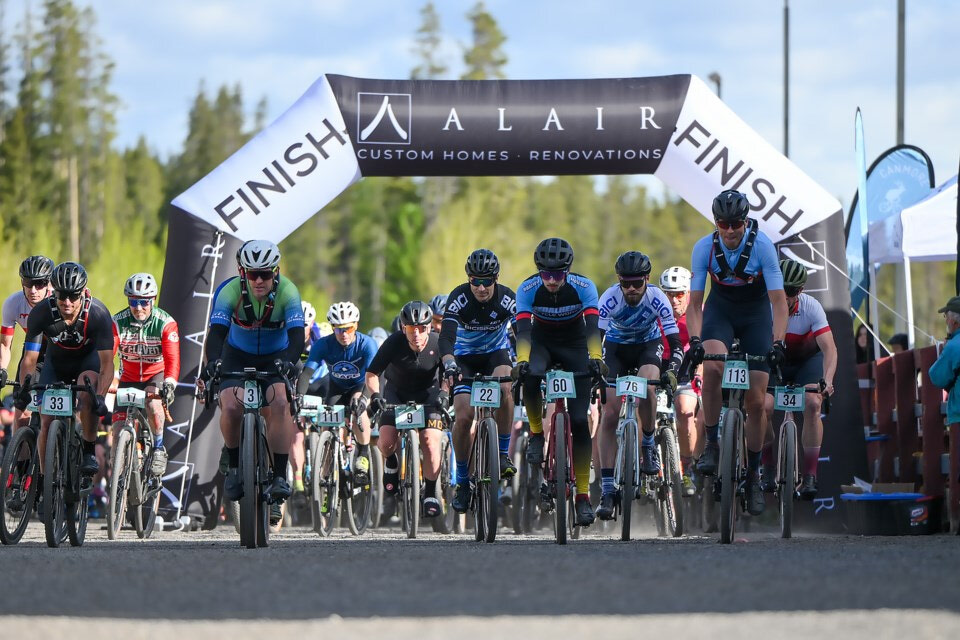Gravel
What is Gravel?
Gravel racing is a cycling discipline that blends elements of road, mountain, and cyclocross biking, held predominantly on unpaved surfaces such as gravel roads, dirt paths, and forest trails. It has grown rapidly in popularity due to its adventurous nature, accessibility, and inclusive community atmosphere.
The Rise of Gravel Racing in Alberta: Adventure, Community & Accessibility
Gravel racing is rapidly gaining popularity in Alberta, offering riders a unique blend of adventure, endurance, and camaraderie. With its vast network of gravel roads, breathtaking landscapes, and a welcoming cycling community, Alberta is becoming a top destination for gravel enthusiasts of all levels.
1. Accessibility & Inclusivity
One of the greatest strengths of gravel racing is its accessibility. Unlike road racing, which often requires expensive aero bikes and highly structured training, gravel events welcome riders on a range of bikes—from endurance road bikes to full-on gravel-specific setups. The welcoming nature of the discipline encourages participation from riders of all backgrounds, fostering inclusivity across age groups, experience levels, and skill sets.
2. Alberta’s Incredible Terrain
Alberta offers some of the most diverse and scenic gravel riding in Canada. From rolling foothills and the rugged beauty of the Badlands to the forest-lined routes of the Rockies, there’s no shortage of breathtaking backdrops.
3. Strong Community & Events
The gravel racing scene in Alberta is built on community. Events focus on personal challenge and shared experience rather than just podium finishes. Many races encourage mass starts with riders of different abilities rolling out together, creating an atmosphere of camaraderie rather than competition. Grassroots races and rides, such as the Grizzly Gravel Grinder and the Iron Lung, have gained momentum, drawing cyclists from across Canada.
4. Adventure & Exploration
Gravel racing is about more than just competition—it's an opportunity to explore remote areas and push personal limits. Unlike road races that stick to urban centers, gravel events take riders off the beaten path, immersing them in Alberta’s backcountry. The unpredictable terrain—washboard roads, loose gravel, river crossings—adds to the adventure, making every ride unique.
5. Low Traffic & Safer Riding
One of the biggest advantages of gravel racing is the reduced exposure to vehicle traffic. Alberta’s expansive gravel road network allows cyclists to enjoy long rides with minimal interaction with cars, creating a safer and more enjoyable experience compared to road cycling. This makes gravel an appealing option for those looking for an alternative to high-traffic road routes.
6. Growth of the Sport & Future Opportunities
With the increasing popularity of gravel racing, more cycling clubs and organizations in Alberta are supporting the discipline. Events continue to grow, and there is potential for provincial and national-level recognition, bringing more resources and development opportunities. The sport’s grassroots nature also means that organizers have the flexibility to experiment with formats, distances, and categories to make races more inclusive and exciting.
Conclusion
Gravel racing in Alberta is more than just a race—it's an adventure, a challenge, and a way to connect with a passionate community. Whether you're a seasoned cyclist looking for a new challenge or a beginner seeking an inclusive and supportive riding environment, Alberta’s gravel scene has something for everyone. With stunning landscapes, welcoming events, and a focus on exploration, it’s no surprise that gravel racing continues to thrive in the province.

